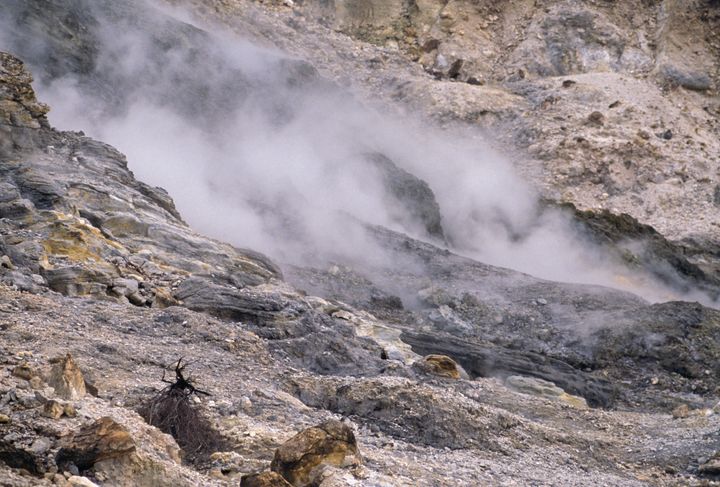
A volcano that has been linked to the sudden wipeout of the Neanderthals is stirring again, according to scientists.
Campi Flegrei is a constellation of ancient volcanic centres near Naples. It’s also known as the “burning fields” in English or “Phlegraean Fields” in Greek, and is a set of sprawling fields, rather comparable to Yellowstone National Park in the US.
But, it’s significantly less famous than some other volcanoes because it’s partially underground. A third of the volcanic site is under the Bay of Pozzuoli – and the remaining two-thirds are inhabited by more than 360,000 people.
That doesn’t mean it’s any less dangerous, though. It’s more active than Mount Vesuvius, which famously exploded and killed off the Roman city of Pompeii back in AD 79.
Campi Flegrei has even been credited with pushing the Neanderthals towards extinction too, around 39,000 years ago – although this is not definite fact.
Others say it may have been modern humans turning up in Europe which pushed the species into extinction.
The volcanic site’s last significant eruption was almost 500 years ago, but it still bubbles away regularly which makes it a real tourist attraction.
The last eruption in 1538 was only minor, but it has been becoming increasingly “restless” since 1950.
And, now scientists think there’s a “realistic possibility” it could soon erupt again.
The Communications Earth and Environment journal warned earlier in June that volcanoes which stir after a long period of rest tend to be quite dramatic.
More earthquakes in the run-up to the eruption can rupture the crust, which provides an outlet for the magma to escape through the surface.
And that might just be developing now, as the study also suggested the site was moving towards “breaking point”, judging from the growing number of local earthquakes this year, which have weakened the structure of Campi Flegrei’s crust.
The crust has also been pushing the land up continually since 2005 at an average of 0.01-0.1m a year. It’s thought that this is caused by magmatic gas gathering around 3km below the surface.
However, it’s not 100% certain that it will explode.
Similar activity was seen between 1950-1952, 1969-1972, 1982-1984 and since 2004, the journal article says.
Still, Italy is keeping a careful eye on it.
The Guardian reports that Italy’s civil protection agency has designated an area around the volcano a high-risk “red zone”, with another 800,000 people living in the yellow zone around Pozzuoli.
